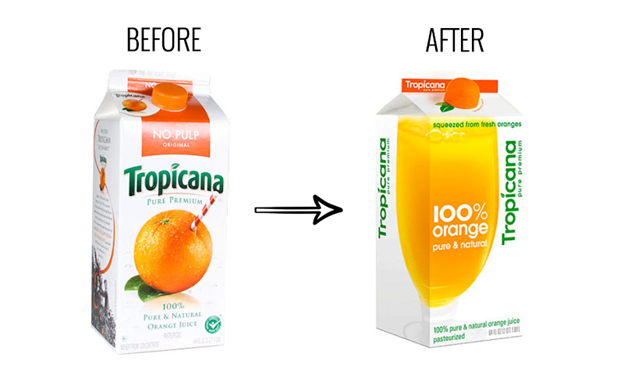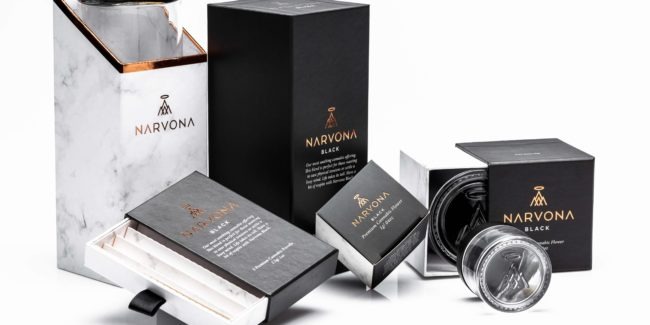So you’ve decided to rebrand your cannabis company. Should be pretty easy, right? You are in for a surprise. Believe it or not, the rebranding process is an arduous journey. It’s one that some would argue is actually harder than the initial branding process itself. If you want to ensure that your rebranding is a success, then you must be ready to do the necessary legwork and be sure to avoid these common mistakes.
Rebranding Mistakes to Avoid
1) Just Changing the Logo
When you go through the rebranding process, don’t just change the logo and call it a day. Your logo is one of the most critical aspects of a brand, but it is not the brand itself! A brand is the summation of your company’s identity; its values, its hope, and its dreams. If all you do is change your logo, you’re not really changing anything nor are you addressing the reasons for your rebrand in the first place. Not only that, but there’s also a risk that people will notice the superficial change, call the rebrand lazy and swear off your company for good.
If you want to rebrand your cannabis company successfully, you need to go all the way back to the beginning of the process and start from scratch. That doesn’t mean you need to scrap everything about your brand, but rather you need to look at the whole of your brand and decide what you want to keep and what you want to discard. If all you change at the end of the day is your logo, then you haven’t done everything that you need to do.
2) Failing to Do Research
There are very few people in this world that like to do research; it’s difficult, it’s time-consuming, and it can be tedious. But, regardless of how you feel about research, you still need to do it! Before you try and rebrand yourself, do your homework. Look at the market, research your competitors, and devise a plan of action based on what you find. If you don’t do your research, your big rebrand could end up blowing up in your face like a recent ad campaign from Coca-Cola. In 2016, Coca-Cola released this ad in Russia:

For those of use that are not intimately familiar with Eastern Europe, this looks like a perfectly inoffensive ad. However, as you geography whiz-kids probably can tell, this ad excludes the Kuril Islands (which Russia annexed in 1945) and Crimea (which Russia controversially annexed in 2014).
After a flurry of controversy, Coca Cola released another ad that included Crimea and the Kuril Islands. However, the second ad backfired as well. Only this time, instead of offending Russians, they offended Ukrainians. In this instance, people were upset at the inclusion of Crimea (which was part of Ukraine until 2014). If Coca Cola had simply done the homework, they probably would not have done an ad like this at all. Don’t be like Coca Cola, do the work.
3) Sticking Too Close to Past Branding
The past can be something that is difficult to let go. When you look backward, everything seems easier because you already know the answers and it feels more comforting because you know how it all turns out. However, the purpose of rebranding is to forge a new identity. The easiest way to mess up your rebranding efforts is by sticking too closely to what you used in the past. If you don’t change enough, people won’t even notice that you went through a rebranding and then you’ve just wasted a bunch of money for nothing.
That is not to say that you cannot use previous elements from your previous brand, but you need to make it distinctive. A great example of a company that’s able to walk the line between past and present branding is Starbucks. Take a look at the company’s logo over time:

Image Credit: logodesignlove.com
Even though the Starbucks logo has made several changes over the decades, they were still able to maintain the most critical elements while not being beholden to their past. Likewise, you can hold on to the most cherished parts of your cannabis brand without getting dragged down by the past.
4) Fixing Something That’s Not Broken
As the saying goes: “If it ain’t broke, don’t fix it.” Sadly, many companies will often try and tinker with something that is widely successful and fail spectacularly. Whenever you go through the rebranding process, you need to think hard about what works and keep it. If you try and change the one thing about your brand that customers actually like, be prepared for a backlash.
The most notorious example of this can be found *once again* in Coca Cola, a company that’s usually pretty on the ball about their branding. In 1985, as the Cola Wars were heating up, Coke decided that a rebrand would give them a leg up on their rival Pepsi. Enter: New Coke.
Sweeter than the original formula and sporting a new can design, New Coke was met with universal scorn. Less than three months after its launch, New Coke was discontinued, and the original flavor was put back into production. Ever since then, New Coke has become synonymous with failed attempts at rebranding.
5) Forgetting Your Target Market
While some rebranding efforts are meant to capture new audiences, most rebrands are often aimed at simply refreshing the company’s image. In the case of those rebrands, one of the biggest mistakes you can make is forgetting who your target demographic is. You may think that your rebrand looks and feels amazing, but if you haven’t checked with your core audience, you may be dead wrong. One of the most spectacular examples of this kind of mistake can be found in the orange juice company Tropicana.

Image credit: The Branding Journal
When Tropicana launched this packaging rebrand, they thought they were going with a clean and minimalistic design; which in and of itself is not a bad idea. But what they underestimated was how their customers would respond. Almost immediately Tropicana was inundated by angry e-mails and phone calls from customers about their new packaging. Some people thought the new packaging made it look cheap, and others were merely attached to the original packaging. Either way, the executives at Tropicana were blindsided because they simply forgot to ask their customers how they felt before launching the new rebrand.
6) Inconsistent Implementation
Consistency is the key to brand integrity. If you do not take the time to consistently implement your cannabis rebrand at every level of the company, then you run the risk of weakening both the old and new brand. One of the most notorious culprits of this mistake is the fast food chain Wendy’s. Over the years, Wendy’s has undergone several rebrands, as any good company should. But what they have failed to do is make sure that the new brand is implemented in every single one of their stores. Whenever you go into a Wendy’s, odds are you’ll find a hodgepodge of old and new; which creates a confusing experience. Consequently, most people don’t even notice when Wendy’s goes through a rebrand because their stores still looks like they are straight out of 2005.
7) Doing Nothing After Launch
The rebranding process can be arduous and time-consuming. Once you’ve got all your ducks in a row, it can be tempting just to launch the rebrand and forget about it. However, when you do that you run the risk of undermining your efforts. Branding a company is a lot like tending a garden: it requires a lot of prep work AND maintenance.
Too many companies are content to go through the rebrand and then act as if nothing has happened. Don’t do that! Prepare to maintain and defend your rebrand at every turn. If you are not ready to put the work in to make sure the rebrand continues to be successful, then you may be better off leaving things the way they are.
Rebranding your company is not an easy process. In addition to doing everything you can to make sure things succeed, you also have to keep an eye out for choices that hurt or hinder your rebranding efforts. Poor planning, inconsistent implementation, sticking to close to the past; there are a number of things that can go wrong with a cannabis rebrand. But as long as you make sure to avoid these pitfalls, you will be that much closer to ensuring that your cannabis rebrand is a success.



